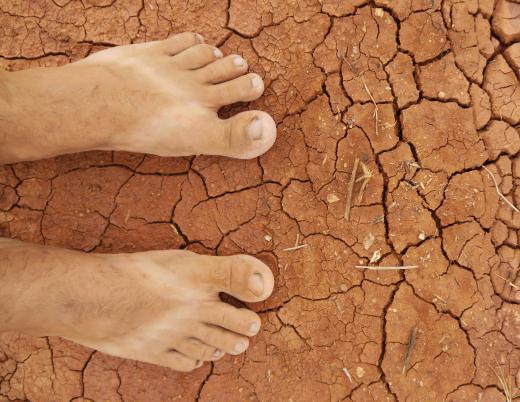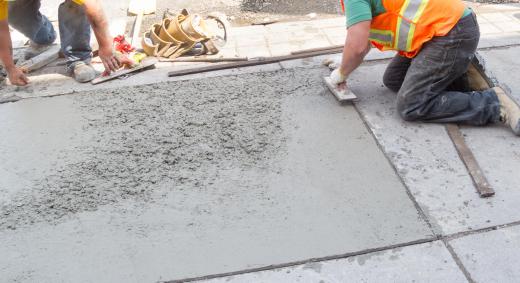What is Groundwater Recharge?
 Mary McMahon
Mary McMahon
Groundwater recharge is an important part of the hydrologic cycle, in which water from the surface works its way into the subsurface, replenishing groundwater supplies. It can be difficult to estimate groundwater recharge rates because it is challenging to track the amount of water which returns to subsurface water supplies, although several different techniques can be used to arrive at estimates. It is important to understand how much water is entering a supply of groundwater, as this influences how much water can safely be taken from groundwater supplies for human use.
In nature, groundwater recharge is supplied by rain, snowmelt, rivers, lakes, and streams. While some surface water evaporates or works its way into another watershed, other water trickles through the earth, gradually meeting up with a supply of water below the surface. It can take a long time for groundwater supplies to build up, or they can be replenished very quickly, depending on a variety of environmental factors.

Humans can also create groundwater recharge. Public works agencies can reintroduce water to the ground with techniques such as specialized reservoirs to restore groundwater to previous levels or to keep groundwater levels stable. This technique is used in areas where groundwater supplies are heavily utilized and authorities are worried about a dropping water table, an accumulation of salts in the soil, or about running out of water entirely. The earth also makes one of the best available places to store water, so groundwater recharge is utilized as a storage technique.

A number of things can impair this process. If groundwater supplies are overutilized, recharging will not make up for the water which is taken, which lowers the water table. As the water table drops, wells may go dry. Salts can also build up in the soil as the flushing action of water is taken away. Human activities such as construction and logging can also impair groundwater recharge by preventing water from entering the ground at all.
As concerns about water resources have grown around the world, many communities have begun to address the issue of groundwater recharge. Some communities have taken small steps to increase the amount of water which flows back underground, such as using permeable pavement which allows water to trickle underground, rather than allowing water to pool on the surface and evaporate. People are also concerned about pollution caused by the release of harmful chemicals; as groundwater flows past deposits of chemicals, the chemicals are picked up and they enter the water supply. Once in the water, pollution is difficult to remove.
AS FEATURED ON:
AS FEATURED ON:












Discussion Comments
Before you can really get down to answering all of the questions that are floating around about groundwater, I think it would probably help to have a better understanding of the groundwater itself. Willowstick Technologies has some very effective, inexpensive ways to map and understand groundwater.
The article says, "If groundwater supplies are overutilized, recharging will not make up for the water which is taken". Why is that the case?
The big question is can groundwater be sold? We find all over, ground water is being sold in tankers, even from residential areas. The government authorities are sleeping. Most of them have a big question mark when this question is raised. They don't seem to be aware.
While talking of recharge of ground water, why not address this issue first?
Post your comments